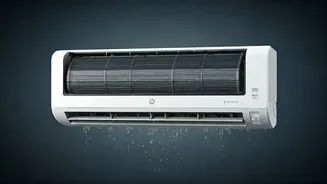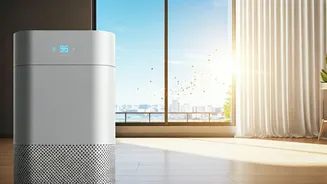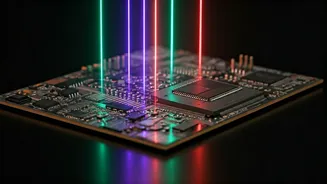AC Types Explained
Air conditioners are essential appliances for maintaining comfortable indoor temperatures. They come in various types, each with its unique features and
applications. Split ACs are very common. They consist of an indoor unit and an outdoor unit, making them ideal for homes. Inverter ACs adjust compressor speed, offering energy efficiency. Window ACs are a more affordable option, ideal for single rooms. Cassette ACs, often used in commercial settings, are mounted on ceilings. Portable ACs offer flexibility, allowing you to cool different areas. Each type presents different benefits, so choosing the right one depends on your needs.
Key Features to Watch
When choosing an air conditioner, several features affect performance and convenience. Energy efficiency is a key consideration. Higher star ratings indicate better energy-saving capabilities. Cooling capacity, measured in tons, is crucial. It determines the area an AC can effectively cool. Consider features like sleep mode, timers, and smart controls for convenience. Air filters are essential for maintaining air quality. Look for models with HEPA or activated carbon filters. Noise levels can impact comfort; lower dB ratings are desirable. Finally, features like auto-restart and self-diagnosis can simplify maintenance and use. Evaluate your requirements to select the best AC.
Sizing Your AC
The size of an air conditioner greatly affects its effectiveness. Calculate the room size in square feet to determine the right capacity. Factors like sunlight exposure, insulation, and the number of occupants influence the required cooling. A unit too small will struggle to cool. A unit too large will cycle on and off frequently, reducing efficiency. Consider the climate and the size and layout of the space. Seek professional advice if needed. Proper sizing ensures optimal performance and energy efficiency.
Energy Efficiency Matters
Energy efficiency is a key factor when buying an air conditioner. Look for models with high star ratings, which indicate lower energy consumption. The Energy Efficiency Ratio (EER) and Seasonal Energy Efficiency Ratio (SEER) are good indicators. An AC with a higher SEER is more energy-efficient over a cooling season. Inverter technology can further improve efficiency. Regular maintenance, such as cleaning filters, boosts performance. Choose an AC that provides comfort and reduces your carbon footprint.
Maintenance and Care
Regular maintenance extends the lifespan and performance of your air conditioner. Clean or replace air filters regularly to ensure clean air and efficient operation. Inspect and clean the coils to improve cooling efficiency. Schedule professional maintenance annually to check refrigerant levels and identify issues. Proper care ensures your AC operates optimally, providing reliable cooling. Neglecting maintenance may cause problems and lead to higher energy costs.














